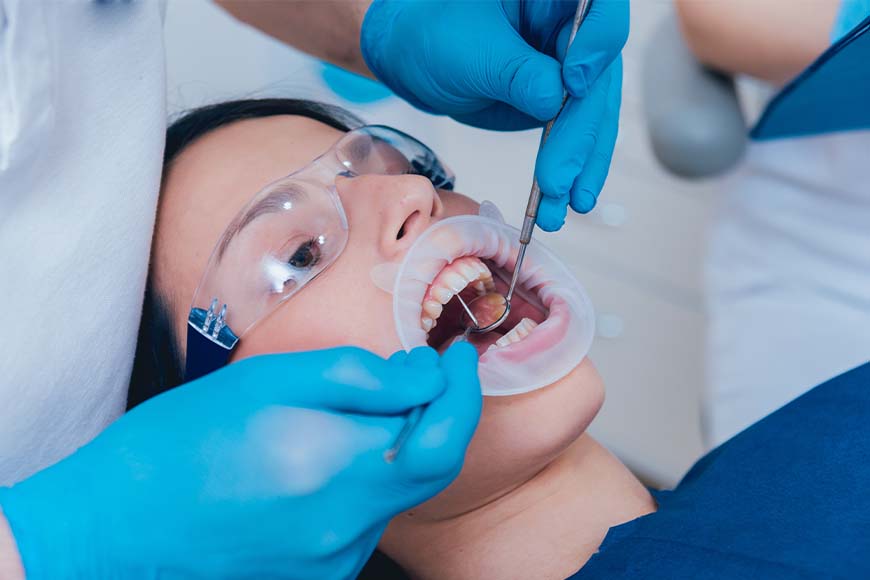Root Canal Therapy Side Effects
Root canal therapy side effects are a common concern for patients considering this procedure. While root canals are generally safe and effective, it’s important to understand the potential side effects of RCT and what to expect during recovery. This article will discuss common and less common side effects, helping you make informed decisions about your dental health.
Understanding Root Canal Treatment Side Effects
Many patients considering root canal therapy have questions about potential side effects. It’s crucial to be well-informed about what to expect after the procedure. This section will address common concerns regarding root canal treatment side effects, providing clear and concise information to help you prepare for your treatment and recovery.
Knowing about potential root canal treatment side effects beforehand can significantly reduce anxiety. Understanding that some discomfort is normal, and knowing how to manage it, can make the recovery process much smoother. This information empowers you to make informed decisions about your dental health in consultation with your dentist.
Being aware of both common and less common root canal treatment side effects is essential. While most patients experience only mild, temporary discomfort, it’s important to recognize the signs of potential complications. Early detection and treatment of any issues can lead to better outcomes and a quicker recovery.
Common Side Effects After Root Canal Therapy
Some discomfort is normal after root canal therapy. This usually includes mild pain, tenderness, and swelling in the treated area. These symptoms are typically manageable with over-the-counter pain medication.
- Pain: Mild to moderate pain is common for a few days after the procedure.
- Swelling: Some swelling around the treated tooth and gum area is possible.
- Tenderness: The treated tooth may feel tender to the touch.
Managing Pain and Swelling
Your dentist will provide specific instructions for managing pain and swelling after root canal therapy. These may include:
- Pain Medication: Over-the-counter pain relievers, such as ibuprofen or acetaminophen, are usually sufficient.
- Cold Compress: Applying a cold compress to the affected area can help reduce swelling.
- Oral Hygiene: Maintaining good oral hygiene is essential for healing.
Less Common Side Effects of RCT
While less frequent, some other side effects are possible after root canal therapy. These include:
- Infection: Although rare, infection can occur after a root canal. Signs include severe pain, swelling, fever, and pus.
- Allergic Reaction: Some individuals may experience an allergic reaction to the medications used during the procedure.
- Nerve Damage: In rare cases, nerve damage can occur, leading to numbness or tingling in the treated area.
- Sinus Issues: If the treated tooth is in the upper jaw, sinus inflammation might occur.
- Tooth Discoloration: The treated tooth may darken over time.
When to Contact Your Dentist
It’s crucial to contact your dentist if you experience any of the following after root canal therapy:
- Severe pain that doesn’t improve with medication.
- Increased swelling or redness.
- Fever.
- Signs of infection, such as pus or drainage.
- An allergic reaction, like rash or itching.
Long-Term Side Effects of Root Canal
Long-term side effects from a root canal are uncommon. With proper care, a root canal-treated tooth can last a lifetime. However, some potential long-term issues include:
- Tooth Fracture: A root canal-treated tooth can be more brittle than a healthy tooth. This makes it more susceptible to fracture, especially without a crown.
- Re-infection: While rare, the treated tooth can become re-infected years later.
- Crown Issues: Problems with the crown, such as cracks or leaks, can compromise the root canal treatment.

Preventing Complications After Root Canal
Several steps can help minimize the risk of complications after root canal therapy:
- Follow Dentist’s Instructions: Adhere to all post-operative instructions provided by your dentist.
- Maintain Oral Hygiene: Practice good oral hygiene, including regular brushing and flossing.
- Get a Crown: If recommended, get a crown placed on the treated tooth to strengthen and protect it.
- Regular Checkups: Attend regular dental checkups for monitoring and maintenance.
Root Canal Side Effects and Anxiety
Many patients experience anxiety about root canal therapy, including concerns about side effects. Talking to your dentist can help alleviate these fears. They can explain the procedure and address your specific concerns.
Understanding the Risks and Benefits
It’s important to weigh the risks and benefits of root canal therapy. While side effects are possible, the procedure is often necessary to save a damaged or infected tooth. Untreated dental infections can lead to more serious health problems.
Root Canal Side Effects vs. Tooth Extraction
In some cases, tooth extraction may be an alternative to root canal therapy. Your dentist can help you determine the best course of treatment based on your individual situation. It’s important to understand the side effects and risks associated with both options.
Root Canal Aftercare and Recovery
Proper aftercare is crucial for a successful root canal and minimizing side effects. This includes:
- Resting after the procedure.
- Following dietary recommendations.
- Maintaining good oral hygiene.
Root Canal Therapy: A Safe and Effective Treatment
Root canal therapy is a safe and effective treatment for saving damaged or infected teeth. While some side effects are possible, they are usually manageable. Understanding the potential side effects and following your dentist’s instructions can help ensure a successful outcome.
Root Canal Side Effects: What’s Normal and What’s Not
It’s important to know what side effects are expected after a root canal and what might indicate a problem. This can help you seek prompt treatment if necessary.
Root Canal Complications: A Rare Occurrence
Serious complications after root canal therapy are rare. However, it’s essential to be aware of the potential risks and seek immediate dental care if you experience any concerning symptoms.
Root Canal Pain: How Long Does it Last?
Pain after a root canal usually subsides within a few days. If you experience persistent or severe pain, contact your dentist.
Root Canal Swelling: What to Expect
Some swelling is normal after a root canal. However, excessive or prolonged swelling could indicate a problem.
Root Canal Infection: Recognizing the Signs
Recognizing the signs of a root canal infection is crucial for prompt treatment. These signs include severe pain, swelling, fever, and pus.
Root Canal Success Rate and Potential Issues
Root canal therapy has a high success rate. However, it’s important to be aware of potential issues that can arise, such as re-infection or tooth fracture.
Root Canal and Overall Health
Maintaining good oral health, including addressing dental issues like infected teeth, is important for overall health. Untreated infections can sometimes spread to other parts of the body.
Choosing a Qualified Endodontist
If you need a root canal, choosing a qualified endodontist is essential. Endodontists are dentists who specialize in root canal treatment.
Root Canal Therapy: Saving Your Natural Tooth
Root canal therapy is often the best option for saving your natural tooth. Preserving your natural teeth is generally better for your oral health and overall well-being.
Root Canal FAQs: Addressing Your Concerns
If you have concerns about root canal therapy or potential side effects, talk to your dentist. They can answer your questions and provide personalized advice.



